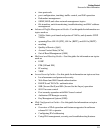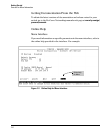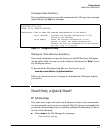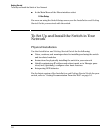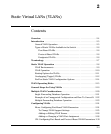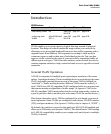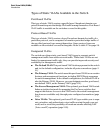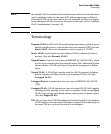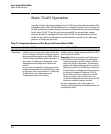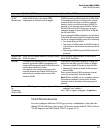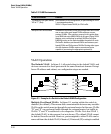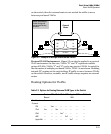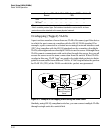
Static Virtual LANs (VLANs)
Introduction
Introduction
VLAN Features
Feature Default Menu CLI Web
view existing VLANs n/a page 2-25
thru 2-30
page 2-31 page 2-45
configuring static default VLAN with page 2-25 page 2-30 page 2-45
VLANs VID = 1 thru 2-30
VLANs enable you to group users by logical function instead of physical
location. This helps to control bandwidth usage within your network by
allowing you to group high-bandwidth users on low-traffic segments and to
organize users from different LAN segments according to their need for
common resources and/or their use of individual protocols. You can also
improve traffic control at the edge of your network by separating traffic of
different protocol types. VLANs can also enhance your network security by
creating separate subnets to help control in-band access to specific network
resources.
General VLAN Operation
A VLAN is comprised of multiple ports operating as members of the same
subnet (broadcast domain). Ports on multiple devices can belong to the same
VLAN, and traffic moving between ports in the same VLAN is bridged (or
“switched”). (Traffic moving between different VLANs must be routed.) A
static VLAN is an 802.1Q-compliant VLAN configured with one or more ports
that remain members regardless of traffic usage. (A dynamic VLAN is an
802.1Q-compliant VLAN membership that the switch temporarily creates on
a port to provide a link to another port in the same VLAN on another device.)
This chapter describes static VLANs configured for port-based or protocol-
based operation. Static VLANs are configured with a name, VLAN ID number
(VID), and port members. (For dynamic VLANs, refer to chapter 3, “GVRP” .)
By default, the switches covered in this guide are 802.1Q VLAN-enabled and
allow up to 2048 static and dynamic VLANs. (The default static VLAN setting
is 8). 802.1Q compatibility enables you to assign each switch port to multiple
VLANs, if needed.
2-5



